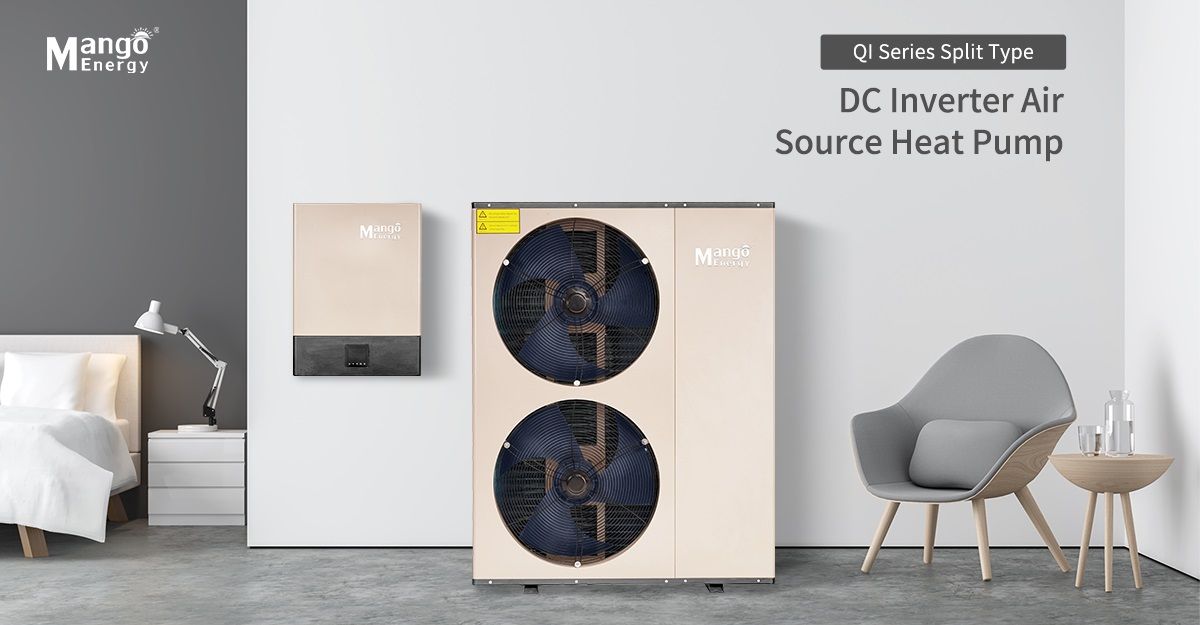
With the growing awareness of environmental protection and the threat of an energy crisis, the demand for efficient energy use is increasing. As a new type of eco-friendly energy device, air source heat pumps are gaining more attention and popularity. Among them, integrated air source heat pumps and split air source heat pumps are two common systems. They differ significantly in terms of structure, installation, and maintenance. Below, Mango Energy will outline their differences one by one.
1. Structural Differences
An integrated air source heat pump system combines key components such as the evaporator, compressor, condenser, and control system into a single unit. In contrast, the split air source heat pump system separates the evaporator and condenser, with the evaporator placed indoors and the condenser outdoors. This structural arrangement makes the integrated system more compact, occupying less space, which is ideal for installation in smaller indoor areas. On the other hand, the split system requires both indoor and outdoor installation spaces, taking up more room.

2. Different Usage Effects
Due to its compact structure and smaller space requirements, the integrated air source heat pump is typically suitable for small residential spaces or apartments where space is limited. The split air source heat pump, however, is more suitable for larger buildings, as it allows for flexible combinations of indoor and outdoor units based on specific needs.

3. Energy Consumption and Efficiency
The integrated air source heat pump generally has lower energy consumption and efficiency due to its structural characteristics. In contrast, the split air source heat pump is more energy-efficient, making it better suited for meeting heating and cooling demands in a variety of situations.

4. Different Installation Processes
The installation and maintenance of an integrated air source heat pump are simpler. Since it is a single, unified system, installation involves placing the equipment in a designated spot and connecting the pipes and power. The split air source heat pump, however, requires separate piping and connections for both indoor and outdoor units, making the installation process more complex.
5. Different Maintenance and Repair Requirements
In terms of maintenance, the integrated air source heat pump system is more convenient as only one unit needs to be serviced. For the split system, maintenance must be performed on both indoor and outdoor units, increasing the difficulty and workload.
In conclusion, integrated and split air source heat pump systems differ significantly in structure, installation, and maintenance. Choosing the right system based on specific needs and scenarios can better meet your requirements, providing a more comfortable and environmentally-friendly living environment.
Mango Energy stands out with its comprehensive range of air source heat pump solutions, tailored to meet various needs, from compact residential spaces to larger commercial installations. With a commitment to energy efficiency, innovative technology, and eco-friendly solutions, Mango Energy ensures not only optimal performance but also a significant reduction in energy consumption. By choosing Mango Energy, you are investing in a reliable, sustainable future, backed by top-notch customer support and cutting-edge technology that guarantees comfort and savings for years to come.


